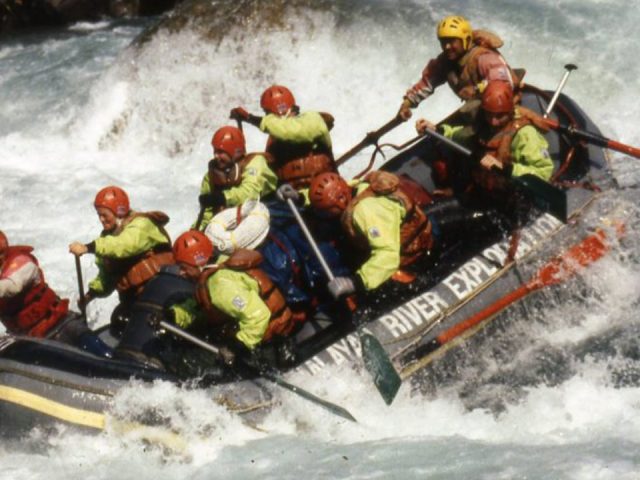Last month I was in the lovely town of Grange-Over-Sands, Cumbria just south of the Lake District in England. This is an outstandingly beautiful and placid part of the world – the world of William Wordsworth, Beatrix Potter, Flopsy, Mopsy, Cotton-tail and Peter Rabbit.

One afternoon I was out strolling the magnificent seaside promenade, and what to my surprise did I see? It was sign showing a human hand sticking out of a deep deposit of muck. The caption read, If the quicksand doesn`t get you, the tide will.
My eyebrows shot up; was this gallows humour, or was it a serious warning? Could something actually be dangerous in this sedate spot where life is so civilized, so safe, so pretty, so muffled – as if packed in cotton wool?
Quicksand, eh? I remember one of the scariest things in the movies when I was a kid was quicksand. As I understood it, if you happened to have the ill luck to step into it, you were pretty much a goner. It was, I was sure, like drowning in wet cement, but not before being compressed all over with tremendous force. It would crush your legs, pop your organs, collapse your heart and lungs, squash your skull and fill your mouth, nose and eyes with gritty goo. After a minute or so – still sinking – your last spark of consciousness would flicker out. And that would be it for you. You’d be a goner, all right.

Well, naturally I was alarmed at the prospect of perishing so unpleasantly in Wordsworth-Potter country, so I resolved to make some inquiries. Just how scared should I be? I decided to consult the authority charged with life saving on the coast of Britain – the illustrious Royal National Lifeboat Institute (RNLI).
A brief aside: The RNLI was founded in 1824 and was originally known as the National Institution for the Preservation of Life from Shipwreck, a name with a keen historic ring to it. It’s a privately funded charity run mostly by volunteers. The organization has over two hundred lifeboat stations dotted around the coast and lakes of Britain and Ireland, and hundreds of top-notch lifeboats at the ready. RNLI rescues over twenty people a day, and is credited with saving some 140,000 lives in its history. To underline what dangerous work it is, and how terribly hostile marine conditions can be: the lives of 600 RNLI members have been lost in rescue operations.
I’ve always loved the RNLI. Its stock-in-trade is a spine-tingling mix of courage, selflessness, discipline, teamwork, mortal danger, mountainous waves, shrieking winds, darkness, cold, snapping spars, people overboard, CPR, rigor mortis… I could go on, but you get the idea. The thought really does make your hair stand on end.

Its motto is marvelous: Into the Storm. If you want a vicarious thrill, visit rnli.org.
As luck would have it, I ran into an off-duty RNLI man later that day. He was looking out over Morecame Bay toward distant Blackpool Tower, wondering if he should go parasailing. The wind was howling about forty knots, I could hardly stand straight, and although my hat was strapped on it still threatened to fly away. The wind turbines out in the bay were practically taking flight. I thought this fellow might be mad. This was Nigel, a plumbing contractor.
So, I asked, what about quicksand? Is it all that dangerous?
“Aye, mate,” he said with a grin, “terrible stuff. We rescue people all the time here.” The wind seemed to whistle through his teeth. We chatted a while longer, then he excused himself. “Time to suit-up now!” He grinned again; his eyes shone. He couldn’t wait to get out there.
Thinking it over later, I realized I was utterly ignorant on the subject of quicksand, so I made it my business to learn about it. I should tell you that the authorities I consulted – citing certain principles of physics – kept repeating it’s “impossible to drown in quicksand”.
I’m sure they meant well, but I’m not sure I believe them. Physicists, citing relative specific densities, can “prove” it’s impossible to drown in water – nonetheless it happens all the time. These may be the same ivory-tower chaps that declared it was impossible for a bumblebee to fly.
In any case, quicksand is distributed irregularly in wet places all over the world, notably on seacoasts, in marshes, and near rivers and lakes. It’s a mixture of small-particle sand (or clay) and water. It looks solid but liquefies when disturbed – like when you step in it. After you do so, you’re apt to struggle to free yourself, which makes the mix more liquid, causing you to sink deeper. The quicksand doesn’t exactly suck you down – but what’s the difference? You’re quickly disappearing from sight, anyway.
By continuing to struggle, strangely enough, you cause the viscosity of the mix to increase, which of course makes you all the more stuck.
To give you an idea of just how stuck you can be, note this: to pull your foot out of quicksand at the rate of one centimeter a second, you’d need a force strong enough to lift a car.
If you ask your buddies to pull you out, says physicist Daniel Bonn of the University of Amsterdam, you risk being extracted in more than one piece. Seriously.
If, for example, you find yourself well and truly stuck in the mire on the beach like in Grange-Over-Sands, the greater threat is that the tide will casually flood in and you’ll soon drown.
So, what’s the best way to react if you find yourself in such a situation?
- Rule #1: Don’t panic.
- Focus on what you’re doing.
- Ditch your pack.
- Call emergency services on your phone.
- Shout for help.
- Sit down and then lie back in order to distribute your weight widely.
- A comforting thought: you will float, because you’re more buoyant than quicksand.
- Gently wriggle your legs free.
- Proceed to backstroke to terra firma.
Professional rescue personnel have it down pat. They will arrive with vital equipment: perhaps tracked vehicle, a hovercraft, a helicopter, broad platforms to work on, and a probe to pump water into the muck around your legs. Once this muck has been thinned out, several stout lads will pull each leg free – one at a time – while you shriek for joy.
Sounds like it might be fun to try, perhaps like bungi jumping, but not so! Even in a practice situation, this experience can be terrifying and exhausting. See the professionals in action:
And that, dear reader, is all you really need to know on the subject. Watch your step!






Facebook Comments